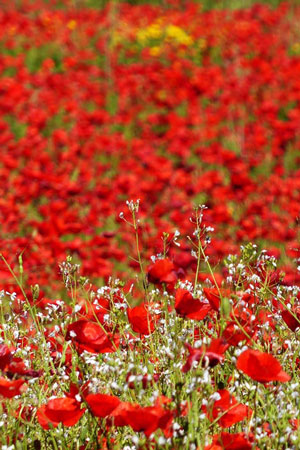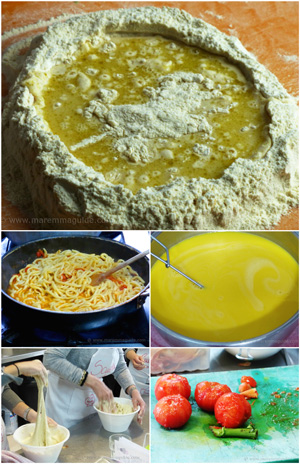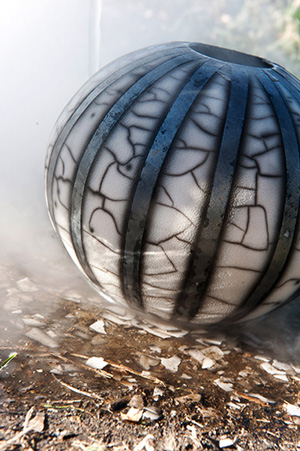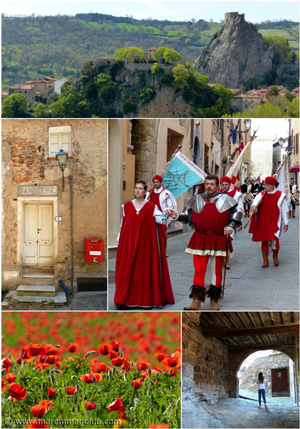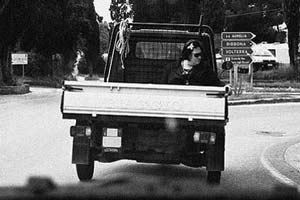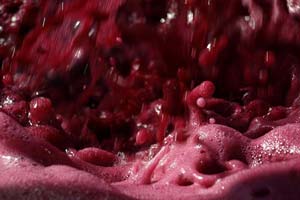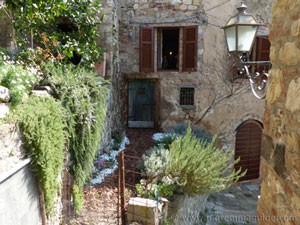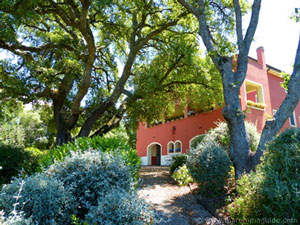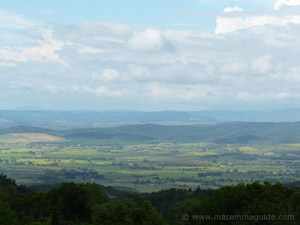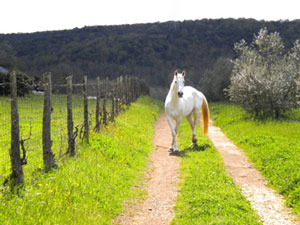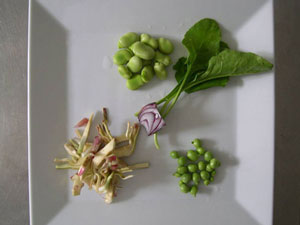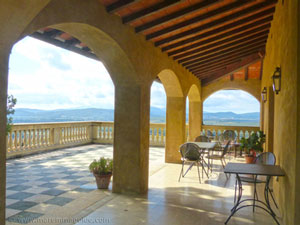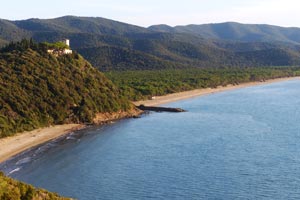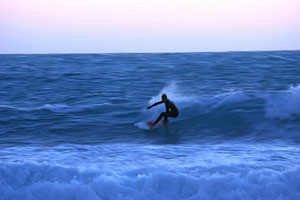16th century graffiti in Maremma
that will take you back to a time you will be glad you never witnessed!
If you were a long way from home, had no smart phone, no way to send an SMS or email, or post a letter, but wanted to tell your lover, the whole world, that you were alive. At that moment you were alive. Because it meant so much. Because you were contemplating your sure death, if not the next morning, then the day after, or the day after that.
What would you do?
Well, 16th century French, Spanish and mercenary soldiers passing through the walled hill town of Seggiano anticipating advancing armies of their enemies wrote their messages on the frescoed wall of a chapel. Even in the knowledge that their loved ones would never see it. And they are still there today. As clear as daylight.
The scene
The time is between the 1550 and 1555 and it is the time of the Siena-Firenze war.
The location is the Oratorio di San Rocco in Seggiano on the slopes of Maremma's volcanic mountain, in Monte Amiata in Maremma. A refuge for regular troops and mercenaries.
The walls are covered in bright Renaissance frescoes depicting the Virgin Mary and child, surrounded by Saints.
And the soldiers are Italian, French and Spanish, and those of the opposing factions from the cities of Siena and Florence.

The messages - thanks to a recent restoration - are as clear today as the day they were written.
This one, dated 1551, reads,: "WCAAB, In perionala spina senese".

And the one above it reads: "20 maggio 1555 di qui passò l’esercito imperiale spagnolo" - "May 20, 1555 here passed the Spanish imperial army."


The soldier Jean Dorsan didn't just carve his name once. He visited the chapel at least on two other occasions.


For another five years the war continued and soldiers continued to write their names and messages on the walls of the chapel.

The Last Italian War
The soldiers passing through Seggiano were fighting in the Last Italian War. It was a bloody and merciless one, and in typical Machiavellian style, notable for its treacherous and deadly episodes. The odds of surviving let alone walking away at the end of one of its battles or skirmishes without an horrendous injury were very low. Not only for its foot soldiers, but its battle leaders too.
And taking refuge in a city had just as deadly an outcome as the battlefield.
Little more than sixty-six kilometres away in Marciano della Chiana in Tuscany, the Battle of Scannagallo on 2 August 1554, was a case in point.
 The Battle of Scannagallo by Giorgio Vasari in Palazzo Vecchio in Florence.
The Battle of Scannagallo by Giorgio Vasari in Palazzo Vecchio in Florence.The Sienese-French and Florentine-Imperial armies clash marked the end of the rule of the Repubblica di Siena and its longstanding war against the Ducato di Firenze. It started at 11am around the creek at Scannagallo and involved 31,500 French, Italian, Swiss, German mercenary (on both sides), Spanish, Corsican, Tuscan, Roman and Napoletan men.
The French-Sienese army
1,000 French-Sienese horsemen
3,000 German mercenary Landsknechts
3,000 Swiss Grisons infantry
3,000 French infantry
5,000 Italian infantry
The Florentine-Imperial army
1,200 light cavalry
300 heavy cavalry
2,000 Spanish veteran infantry
Corsican recruits
4,000 German
Landsknechts
4,000 Tuscan, 2,000 Spanish and 3,000 Roman poorly trained infantry
200 Spanish soldiers
a company of Napoliese horse arquebusiers
It is though that the apparent ease with which the first Florentine-Imperial attack, by its cavalry, took a swathe through their French-Sienese counterparts, was because the Florentine leader had bribed the two French commanders with gold.
In just two hours, 4,000 French-Sienese men were dead and another 4,000 wounded or taken prisoner.
The city of Siena was laid to siege and not a grain of food was allowed to enter. The Florentine-Imperial leader waited. And when a reconnaissance mission for food was attempted by a corps of 1,300 mercenary soldiers, he annihilated the lot.
Now, rare surviving 16th century graffiti may not be your "thing" and I can't say it is one of my "passions", but when you are stood there in this tiny chapel - which has its own fascinating historical reason for why it was constructed - and you can see the hand of a man who lived more than four hundred and sixty years ago. When you understand the context in which he wrote his name. Then five centuries old engravings in six hundred and twenty three year old frescoes is quite something to see.
The sense of standing in the same place and reaching back through time, watching Jean Dorsan carve out his name, is really profound.
These scripts are also rare for another reason: they are amongst the very few surviving first records of vernacular Italian.
If you are in the Seggiano area, it would be so easy to walk past and miss it. Don't! Go get the key! (See below.)
The Oratorio di San Rocco in Seggiano
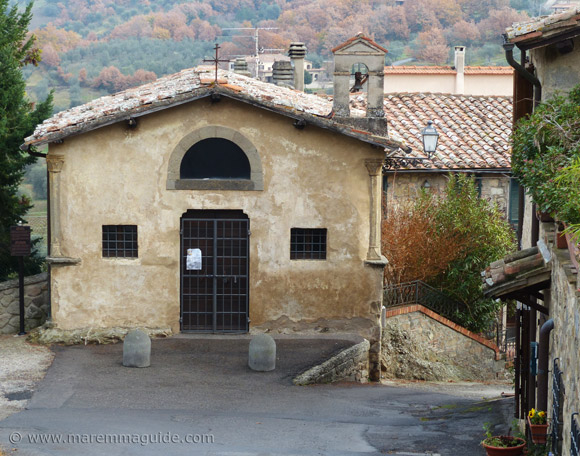
It's story
Situated outside of the city walls, just below Market Gate - the Porta dell Mercato, the community of Seggiano started to build the Oratory of San Rocco, dedicated to the Virgin Mary, in 1486 to implore God for the end of the plague epidemic that struck Italy in 1476, and reached Monte Amiata in 1485. They finished building it in 1490.
Recently restored, it re-opened to the public in 2009.
The frescoes
Although there are the pale remains of frescoes in the body of this tiny chapel, its apse is crammed full of colourful ones painted by the hand of a little-known Sienese artist named Girolamo di Domenico. Apparently his works were strongly influenced by those of the artists Francesco di Giorgio and Signorelli and he finished these in 1493.
In the centre of the ceiling is a depiction of the Eternal Father, flanked by the four evangelists: "Eterno Padre e gli Evangelisti".
On the right wall, the four Saints of Agostino, Girolamo, Protasio and Rocco.
The Madonna and Child enthroned between Saints Sebastiano, Bartolomeo, Gervasio and Bernardino of Siena on the back wall.
And on the left wall, the Deposition from the Cross and Our Lady of the milk with Saints Sebastiano and Rocco.

The stars in the ceiling are three-dimensional, in plaster.
 The Eternal Father.
The Eternal Father.
 Matthew and Mark.
Matthew and Mark.
 John.
John.
 Madonna and Child by Girolamo di Domenico, 1493.
Madonna and Child by Girolamo di Domenico, 1493.
 San Gervasio and San Bernardino holding in his hand Christ's monogram: "IHS".
San Gervasio and San Bernardino holding in his hand Christ's monogram: "IHS".
 Saints Sebastiano and Bartolomeo.
Saints Sebastiano and Bartolomeo.

The head
The somewhat gruesome wax head - you can't miss it as it is on the table in front of you as you enter the Oratory. It is a replica of a mummified head that I cannot recall the name of! I'll find out.

On the table under the head is another antique. This time an announcement of a funeral to take place on the 31 May 1891 of (if I have the first letter of the surname correct) the "fratelli e sorelli Defunti" - the brothers and sisters Defunti.

Access
Somewhat ironically, the Oratorio is kept under locked to casual visitors to protect it from 21st century graffiti.
But the local organisation of the Fondazione le Radici di Seggiano arranges tours. The tour days, times, and ticket prices and contact information can be found here.
Other things to see in Seggiano
You wouldn't think that a small rural hill town on the slopes of a volcanic mountain could be home to such fascinating things, but it is...
The ancient olive mill
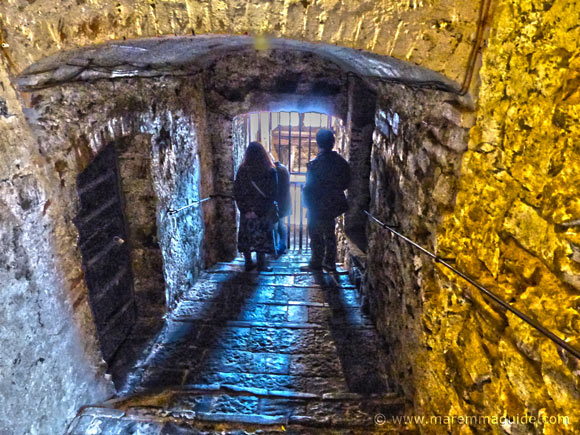
Famous for its Olivastrata Seggianese DOP olive oil - cultivated from centuries old indigenous Olivastrata di Seggiano variety olive trees - the walled historic centre was once home to no less than twenty-four olive oil mills. An ancient one, over three levels, is now open to the public as a museum and is well worth a visit.
The ancient Frantoio Ceccherini olive mill.
The only olive tree in the world
There is only one in the whole world and it is in Seggiano. It looks like this, but you will have to click the link to find out why!
The Olivo nel Cisternone.
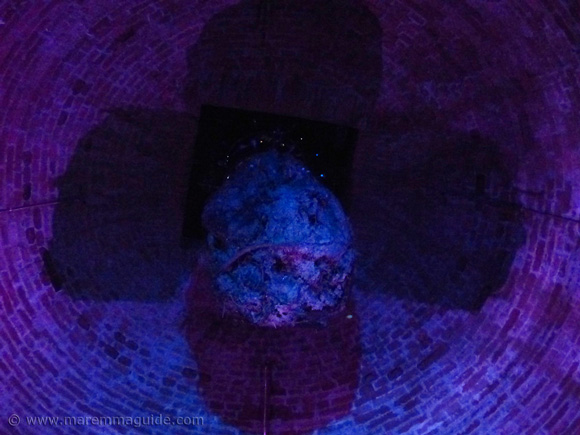
Explore some more...
